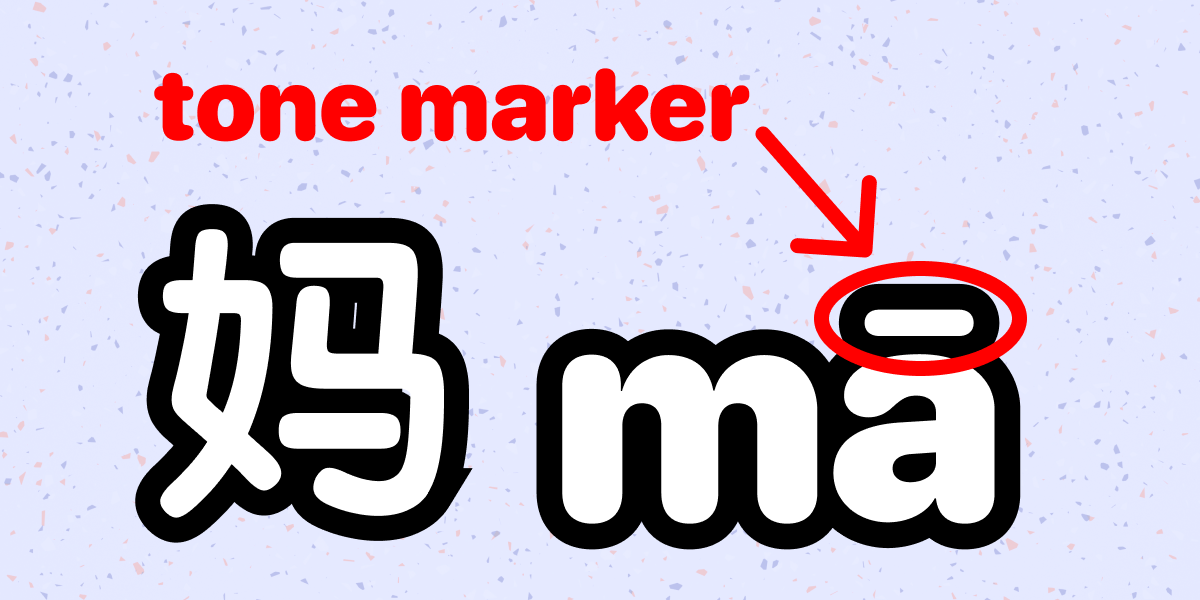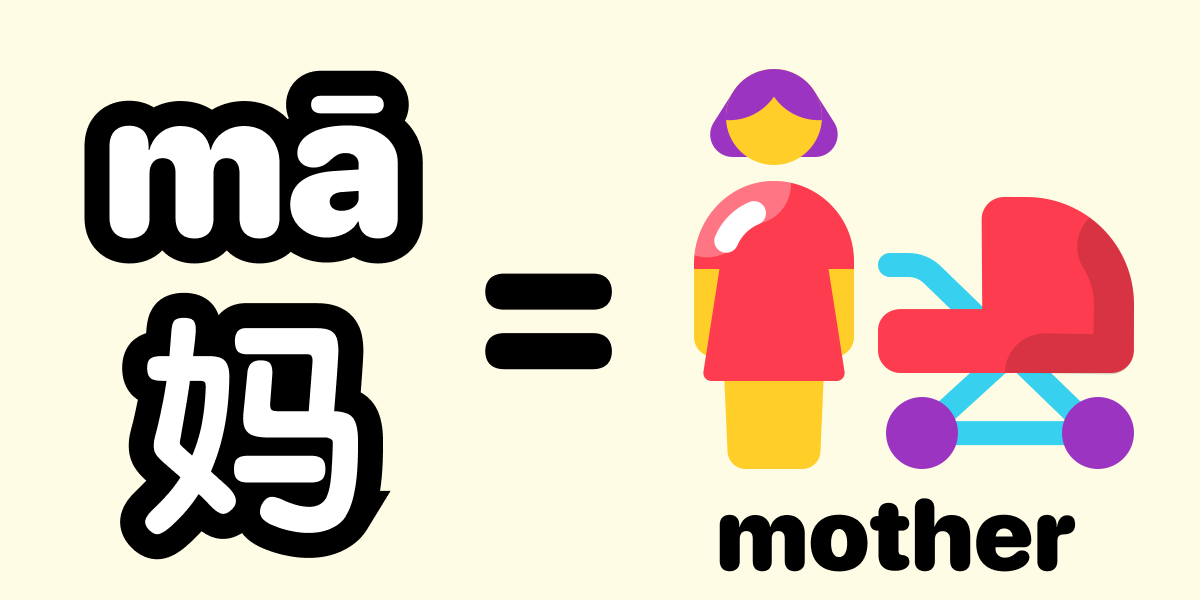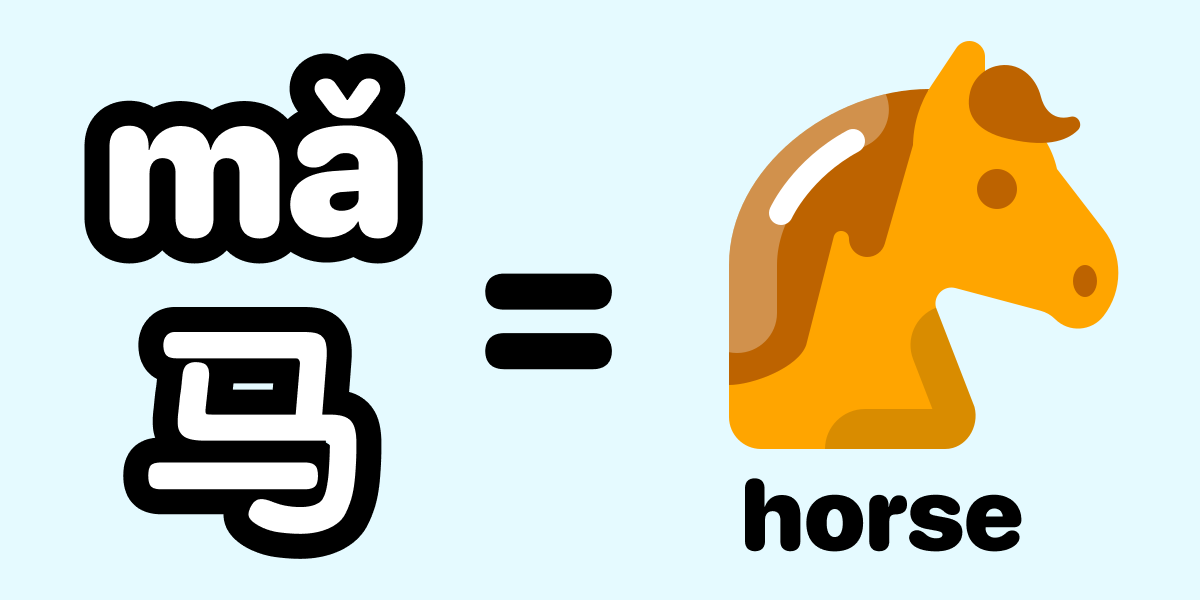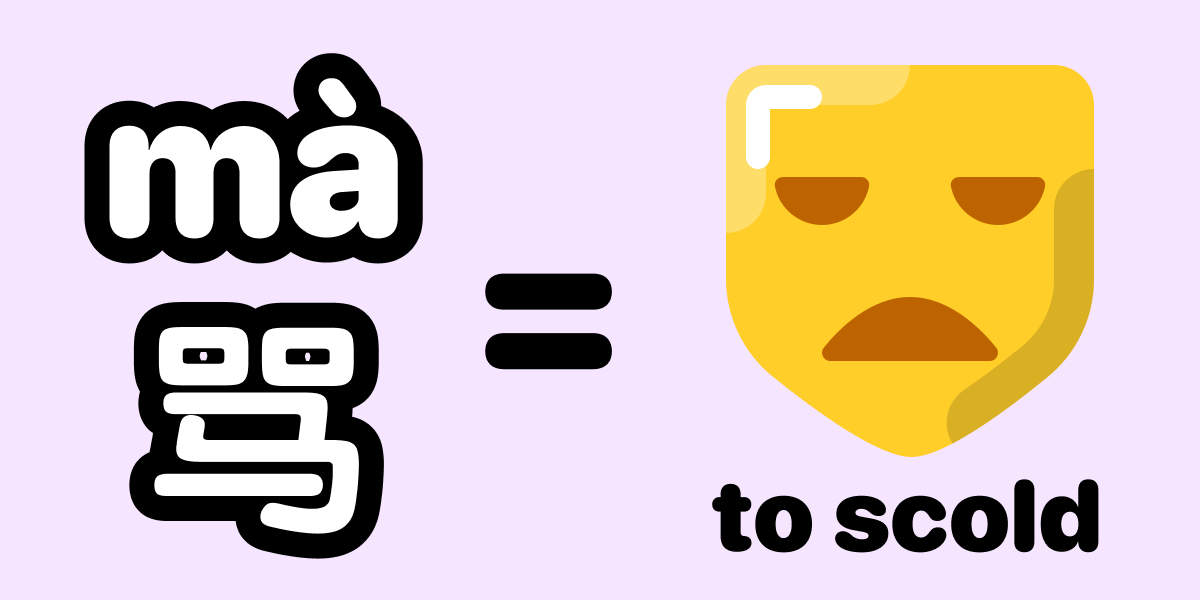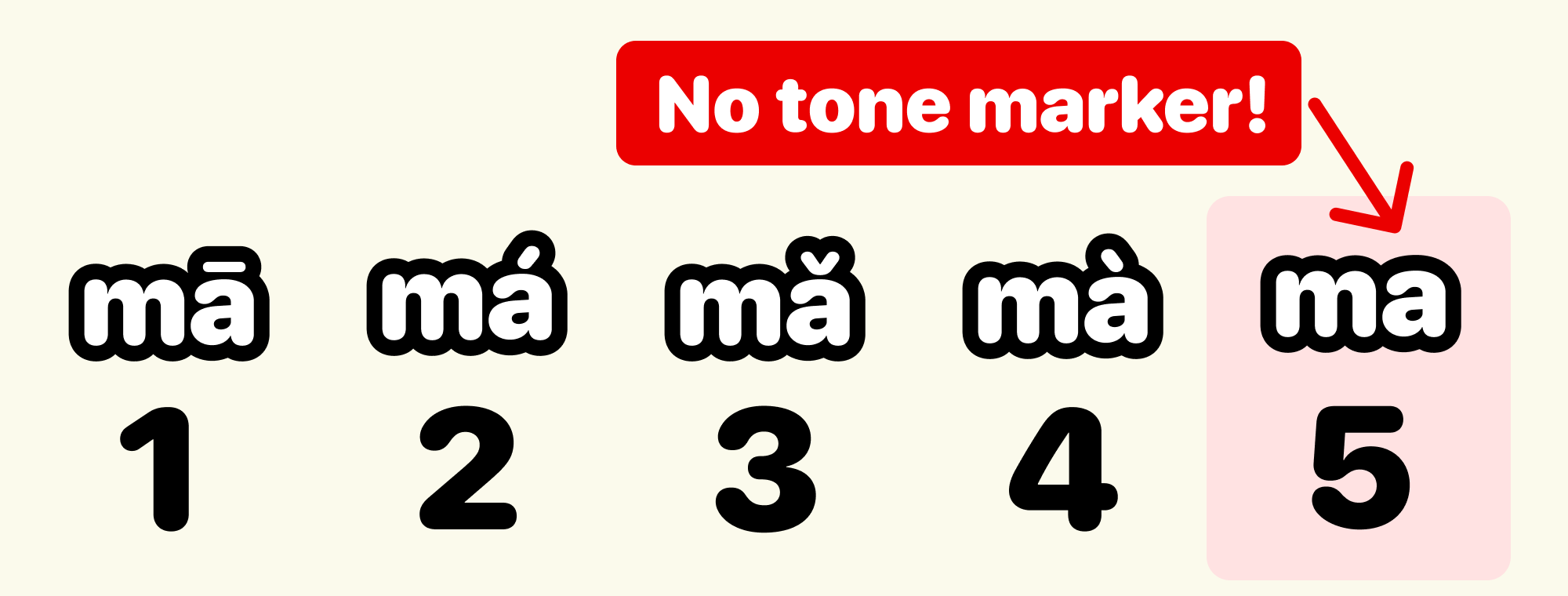What are the 4 tones in Chinese? (audio examples included)
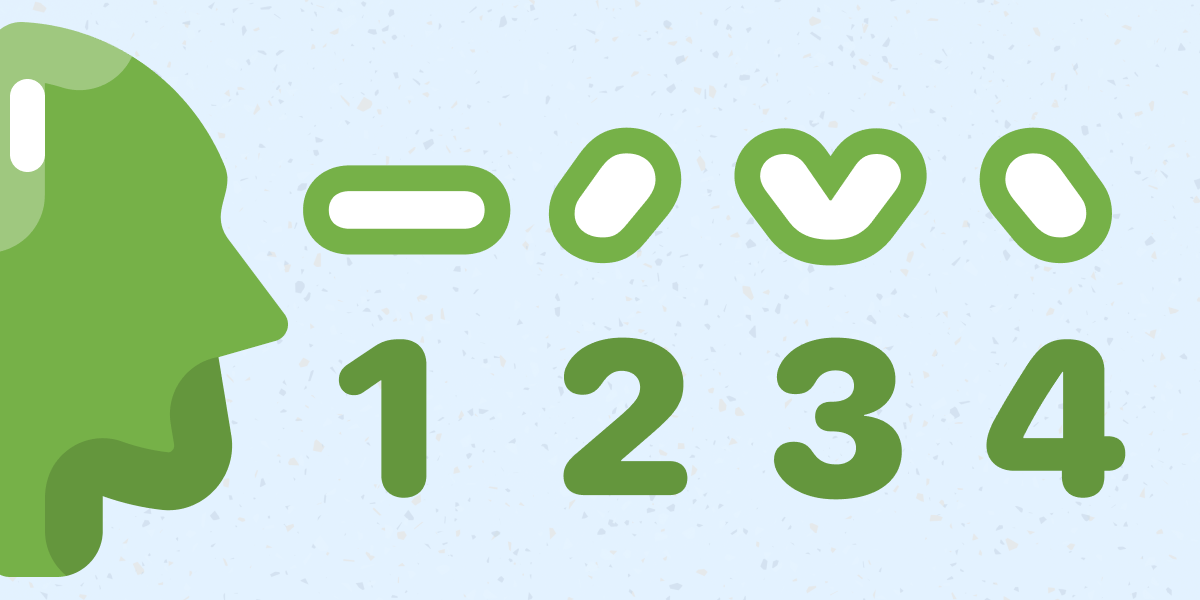
Every single character in Chinese is associated with a tone, and there are 4 tones in total.
When Chinese is written in its romanized form, pinyin, the latin characters above each pinyin word has a tone marker that shows which of the four tones it is.
For example, the word 妈 (mā), which means mother. The image below shows the tone marker.
The line (¯) above the a is the tone marker. In this case, it’s a straight, flat line, which means it’s the first tone, telling you that the word for mother, 妈 (mā), should be pronounced with a flat pitch.
Let’s dive into the four tones!
For each tone, we’ll look at the tone marker used to represent it, and listen to an audio example of how to pronounce a word with that tone.
Meet the 4 ma's
We will use the syllable ‘ma’ to showcase the four different tones, because ‘ma’ can mean four completely different words depending on which tone is used!
1st Tone
Let’s look at the first tone again, with the example 妈 (mā), which means mother.
Listen to the 1st tone:
You’ll hear that the pitch of the word is relatively high, and also flat throughout the word without any changes. This matches how the tone marker (¯) was written — a flat, straight line.
TIP
The shape of each tone marker corresponds to the pitch of the tone!
2nd Tone
Listen to the 2nd tone:
The second tone is a rising pitch. It starts at a low pitch and rises up to a higher pitch — similar to the tone you use when asking a question in English.
Fittingly, it is written using the ´ tone marker, which matches the rise of a pitch when pronouncing a word with the second tone.
TIP
If you ever forget how to say the second tone, just remember its an upward sloping line, which means its a rising tone!
3rd Tone
Listen to the 3rd tone:
The third tone is sometimes the most confusing of it all, because it contains a change in pitch halfway during the tone!
Let’s start by analyzing the tone marker (ˇ) — the line starts high, dips, and then rises to end high.
This is exactly how the pitch changes throughout the tone. The pitch starts high, falls and then rises again!
Listen to the audio recording above and compare it with the audio recordings for the first and third tone to get a feel of what it means for the pitch to change in the third tone.
TIP
Don’t stress out too much if you aren’t able to reproduce the falling-rising pitch of the third tone yet. Keep listening to examples with words using the third tone and eventually it’ll come naturally to you!
4th Tone
Listen to the 4th tone:
The fourth tone is a falling tone. It starts high, and ends low. This is represented by the tone marker (`), which is a line that goes downwards.
It’s the tone that you use in English when giving commands or scolding someone. Imagine sternly telling a misbehaving kid to “stop!” — that’s exactly how you’d say the fourth tone.
Compare the 4 tones
Let’s listen to all 4 tones in sequence and compare them.
| Pinyin | Audio | |
|---|---|---|
| 1 | mā (妈 mother) | |
| 2 | má (麻 spicy) | |
| 3 | mǎ (马 horse) | |
| 4 | mà (骂 scold) |
Quiz Time!
It’s time for a little quiz to see if you can identify these 4 tones. Listen to the following 4 audio snippets, and see if you can identify which ma tone each of them contains.
mā 妈, má 麻, mǎ 马 or mà 骂?
(answers in next section)
Question A:
Question B:
Question C:
Question D:
Quiz Answers
Question A: má 麻 (full sentence: 我喜欢吃麻辣)
Question B: mǎ 马 (full sentence: 木马)
Question C: mā 妈 (full sentence: 爸妈)
Question D: mà 骂 (full sentence: 被骂)
Practice makes perfect — don’t stress out if you didn’t get it right this time. Here are some extra tips to help you:
Some websites say there are 5 tones… so is it 4 or 5?
Ask any Chinese person and they will say that Chinese has 4 tones. Any new word is taught in the context of these 4 tones. If you’re a beginner or an intermediate learner of Chinese, that is all that you need to know for now — feel free to skip the rest of this section.
Yes, there is indeed a “5th neutral tone” that is relatively rare. When a word has this neutral tone, it’s pronounced in a very light and flat manner. Think of it of the opposite of emphasis — instead of adding some sort of emphasis to a word, you’re in fact intentionally de-emphasizing it.
It’s a point of contention whether the pitch change associated with this neutral tone is significant enough to qualify it as an actual “5th tone”, or if its just a slight de-emphasis of a word. In fact, this neutral tone doesn’t even have a tone marker — its represented in pinyin form by the lack of any tone marks.
Let’s look at an example.
The “5th” neutral tone
This neutral tone is not commonly used, and is associated with very specific words. One example is when two repeating characters are used.
For example, the word 妈 (mā) means “mother”, as we’ve seen earlier; but it’s more commonly used as part of the phrase 妈妈 (māma) which is a more common way of saying “mother”. When both characters are the same, very often the second character loses its original tone and takes on the neutral tone instead.
Listen to the 5th (neutral) tone:
The audio recording contains 2 syllables. The first syllable is mā (first tone) and the second syllable is ma (neutral tone).
 Kai Loh
Kai Loh
